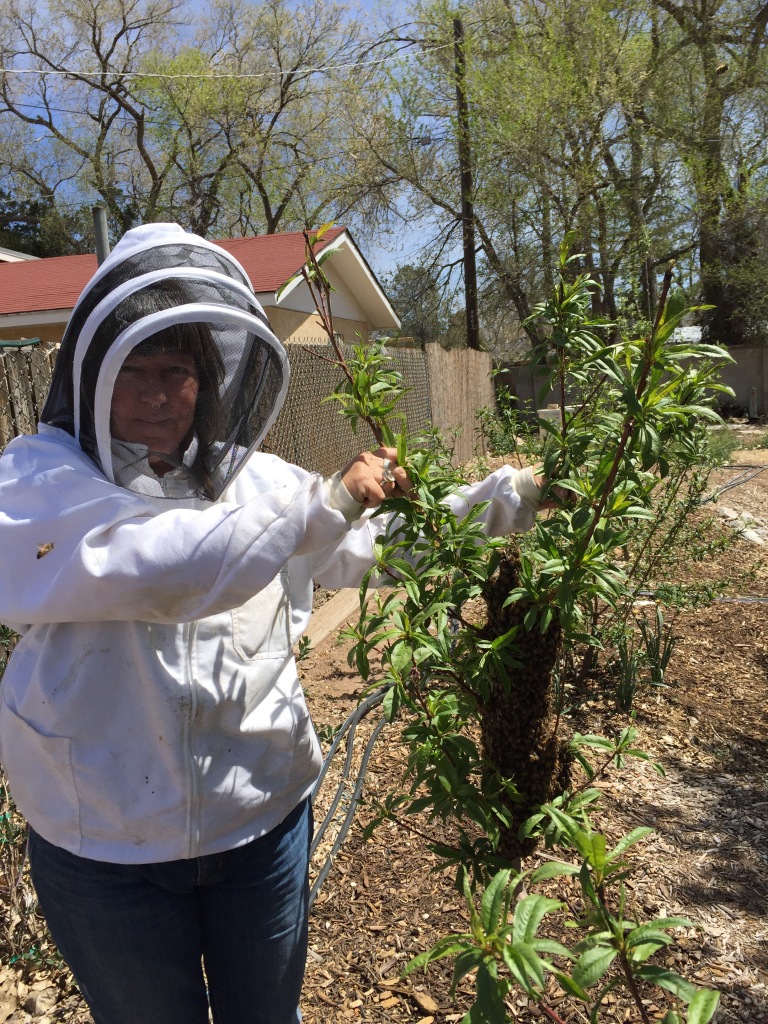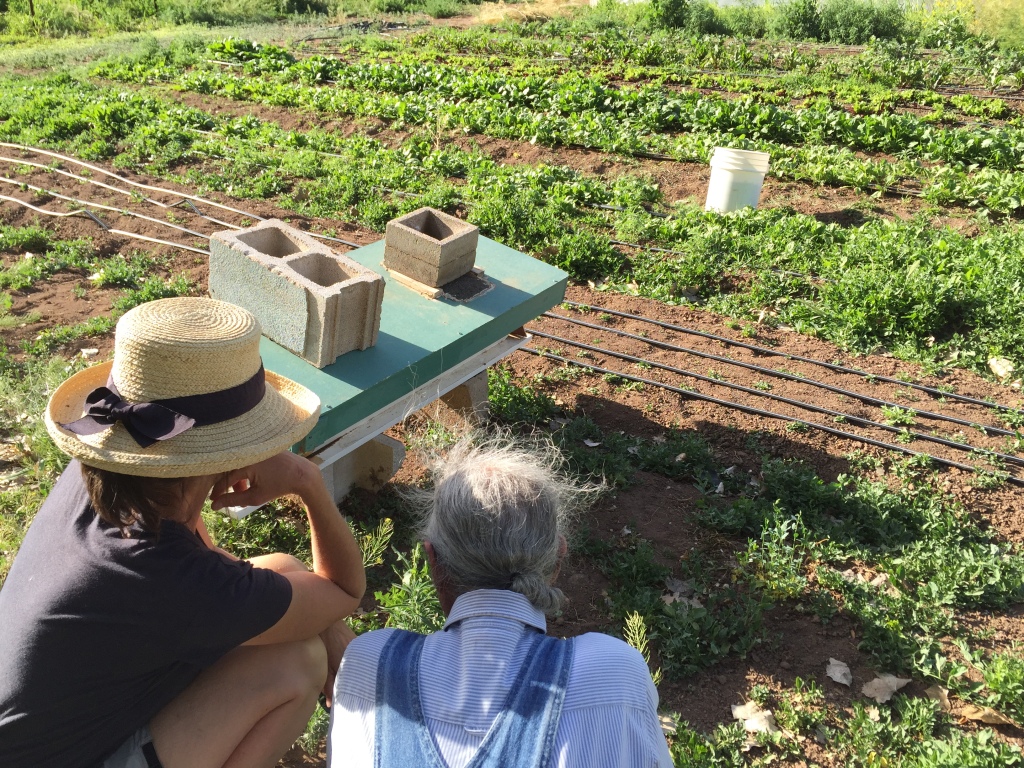


Recently I returned from a 40 year alumni reunion for the Junior College I attended in Kansas.
As always happens, the bee tenders eventually find each other. Bee stories fly through the air as varroa mite grievances and swapping of best practices ensues.
My college mate Ken, has been keeping bees for many years, despite a go ‘round with non-Hodgkins Lymphoma. He has come to understand that exposing bees to continuous rounds of chemicals will in the end be highly detrimental. Toxic. He knows from first hand experience in his own body and multiple rounds of chemotherapy.
Of course we know honeybees have a very short lifespan, 30-45 days, which often allows us to blithely impose such harm and insult upon our hives. We say, “it’s only for a short time and the greater good of the whole hive.” But is it?
Chemicals can persist in the wax and eventually weaken a colony, not to speak of what happens to a queen bee who is exposed endlessly over time because she never leaves the hive. Research shows Infertility. Shortened life span. Death.
I have resorted to Formic Acid this Fall, due to some of my woefully neglectful practices of my hives this summer and the need to get a leg up on the mites before winter. I know it’s considered “natural”. But at the concentration of formic in the strips, I wonder.
One thing I have come to know over the increasingly hot summers of sustained temps over 100 degrees and the aridity of a drought ridden landscape due to climate change— is that my top bar hives are becoming horribly inadequate. The bees do their usual magic of building their own combs, with beautiful curves and graceful arcs that extend from the top bar to the floor of the hive. Then they stash them with honey. Bulging “cheeks” and finished honeycombs with the sweet nectar burden the brilliance of their architecture beyond capacity. The infernal heat, coupled with lack of proper ventilation in a top bar and the way top bars often have “cleats” glued into the bar rather than carved out of the wood bar, has created disaster after disaster. In my last blog I reported on the top bar “cleats” being pulled out of the top bar and combs collapsing in the hive as I harvest the honey. Or else, the luminescent white virgin fresh comb that the girls build merely melts off the bar like butter as the temperatures rise in the hive.
What I do know is that this is not sustainable—despite my best attempts to put them under trees, provide shade structures around the hives, and ventilate with propped lids.
I wonder if our equipment (or specifically mine)—whether topbar or Langstroth—is too archaic and faulty for the climate challenges that lie before us in the high desert?


I feel deeply aggrieved that I would visit any old, faulty and poorly built hives or equipment upon my girls. We humans like to live in homes with temperature controlled climates and weatherization. It gives us the ability to feel comfortable and prosper. Why would we ask anything less of our honeybee hives, if we care about their health?
You can see why I am becoming more enamored by native bees by the day. They are self sufficient and hopefully, adaptable and evolving to meet the needs of their changing habitat. I wonder if the honeybee industry and hives will adapt fast enough for climate change?
I have often thought that my generation will be the “hinge” of the Great Turning. It was coined by one of my teachers in eco-literacy, Joanna Macy. She speaks of humans waking up to what is needed for an earth affirming and life sustaining way of life and the shift or “turn” to an ecological age rather than an Anthropocene age—where we understand that we live in a WEB of life, not just a human centric planet. I have heard the gloomy doomsday prophecies and uncomfortable warnings that our species, along with millions of others, will become extinct and no longer inhabit planet earth if we don’t change our minds and our fossil fuel guzzling lifestyles. I have bought into the idea that yes, suffering will be a necessary consequence. We already see increased suffering with hurricanes, famines, and natural disasters on steroids. The human population explodes, and along with it, our consumption and devastation of the planet. Meanwhile, the planet seeks to mitigate our human impositions.
But my brief conversation with Ken, his eyes alight with wisdom and enthusiasm, have changed my mind. One thing that stays with me is Ken’s dedication to new and non-invasive methods for his girls. In the short 15-30 minutes we spoke, he told me how he is ventilating his hives, how he is monitoring the state of the hive for diseases, queen death and other stress with a small gadget called Api Vox Auditors, and how he is only using essential oils—a very specific formula and application for each season. He was trained by an old beekeeper. He is religious about sticking to what he learned.
Not surprisingly, Ken has not been losing his bees to mites or other diseases. No disposable or fast food Mc-bees —buying new honeybee packages every year. He has built a healthy and resilient genetic stock of his own.
Suffering is not foreordained, I have come to conclude. For those who are awake and able to change their destructive or ignorant path, one can be in tune with the rhythms of nature and even learn something new in the process.
As the bee community, we must add into our best practices, those that mitigate and remediate the suffering of our beehives due to the certainty of climate change. I would also say, we must change our own lifestyles.
In a time of unpredictable weather patterns, increasing aridity and a climate on steroids here in the Southwest, how will we adapt?

Thank you for the thoughtful article. Did your friend share the essential oil formula?
LikeLike